Dr Arts Guide to Science Exploring Systems Student Worksheet

Podcast Astrobiology (ALIENS) with Dr. Kevin Peter Hand
ALIENS! EXTRATERRESTRIALS! MARTIANS! Permit's. Get. Into. It. The phenomenal Dr. Kevin Peter Hand of NASA'southward Jet Propulsion Laboratory dishes on the oceans of afar moons, methane rivers, East.T., ice crusts, what might exist out at that place, the timeline of possibly finding them, ghosts, aliens, night matter, if we should fearfulness making contact with intergalactic beings, if the authorities is hiding alien secrets, and how finding even extraterrestrial microbes would change the fashion we see life on this hither tiny blue dot in space.
Go Explore
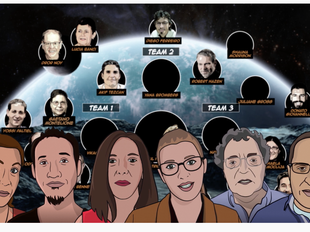
Video Astrobiology A Instance Study: ENIGMA
This video and accompanying guide is designed to aid facilitate discussion and to provide tips for diving deeper into the world of Astrobiology. The activity is designed to enhance studies of various Life Science, Earth Science and Physical Scientific discipline topics in heart school and high schoolhouse such as: development; proteins; biogeology; chemic reactions; rocks and minerals; the solar system and the universe. Relevant cantankerous-cutting concepts include: Nature of Science; Systems and Organization Models; Interdependence of Scientific discipline, Engineering and Technology. Click here to download the Video Discussion Guide (pdf).
Go Explore
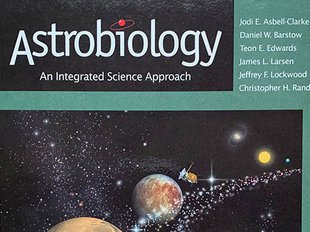
Classroom Materials Astrobiology: An Integrated Science Approach
Astrobiology: An Integrated Scientific discipline Arroyo is a full-year integrated scientific discipline curriculum that weaves its style through the disciplines of biology, chemical science, physics, astronomy, and World science, as well as sociology, ideals, and the psychology of human idea and behavior. The curriculum is intended to offering an entry into high-school science and was developed by the Technical Education Enquiry Centers (TERC), an independent research-based not-turn a profit organization.
Go Explore

Classroom Materials Color Me Mars! Featuring the Perseverance Mars Rover
Download gratis coloring pages from the NASA Astrobiology Program featuring the Perseverance rover. The artwork has been adapted from the Astrobiology Graphic Histories, and features moments in Perseverance'south mission to get together samples from the Martian surface at Jezero crater. Files are available as pdf files or png images. Dig out your markers, paints, and crayons and add together some colour to Perseverance's journey!
Get Explore
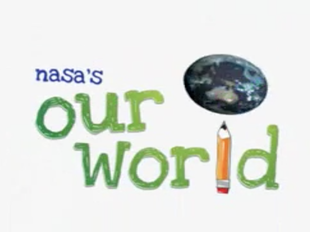
Video Our World: Life on Other Worlds
Explore the possibility of finding life on other planets. See how NASA's search for water on Mars proved successful with the Phoenix Lander. Discover out almost extremophiles and what makes a habitable zone for life as we know it. Since the production of this video, NASA has learned more than about Mars through these missions: Mars Reconnaissance Orbiter, Mars Science Laboratory (Curiosity), Mars Orbiter Mission, and MAVEN.
Go Explore
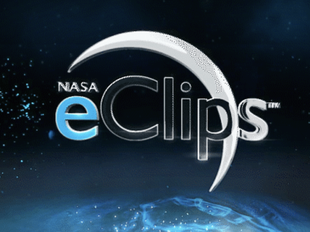
Video Our World: What is an Extremophile?
Learn about extremophiles and the hostile environments where they can be found through captivating NASA videos making up this 3rd-5th collection. Almost every possible environment on Globe is home to a living organism, no affair how hostile the environment may seem.
Go Explore
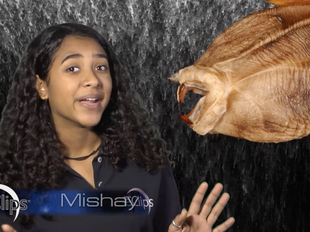
Video Our World: Where Practise We Discover Extremophiles?
Where do we observe extremophiles? Nosotros look for environments that button the limits for ordinary living organisms. NASA conducts analog testing in these extreme environments to better understand life on Earth and place the potential for life in the universe.
Go Explore
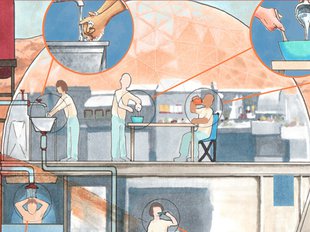
Hands-on Classroom Activities H2o in Extreme Environments
Water in Farthermost Environments engages youth in collaborative teams to engineer water filters with basic materials, and past playing a game to learn about where water can be found in our solar system.
Go Explore
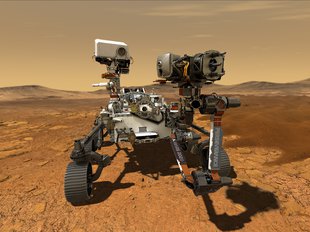
Classroom Materials Mission To Mars Student Claiming
Lead students in designing and building a mission to Mars with a guided education plan and resources from NASA, join in live stream Q&Every bit with experts, and share pupil piece of work with a worldwide audition. Learn how, why, and what Perseverance will explore on Mars, and detect out about an heady opportunity for you and your students to join in the adventure!
Go Explore
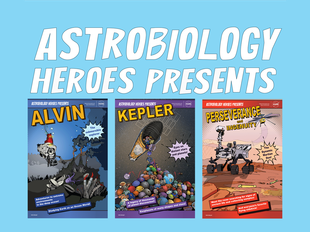
Poster Astrobiology Heroes Presents
Download posters and digital wallpapers of some of astrobiology's greatest heroes! From exploring the depths of Earth's oceans to spotting worlds around distant starts, these heroes of astrobiology science are helping united states of america empathize life's origins on Globe and the potential for life in the Universe!
Go Explore

Classroom Materials Life in the Extremes
This educational product includes a set up of trading cards featuring 9 different extremophile groups. The front end of each carte has an image of an environment in which the extremophiles thrive (e.g. Grand Prismatic Spring at Yellowstone for the thermophiles). The dorsum of each carte du jour has a small photograph of a representational organism (eastward.g. Deinococcus radiodurans for the radioresistant microbes) and engaging text about each group'due south "Extreme Abilities", "Farthermost Environments" and "Extreme Examples". The trading cards were developed past the onetime NASA Astrobiology Plant (NAI) team at the Academy of Wisconsin, Madison.
Get Explore

Classroom Materials Extreme Microbiology and Astrobiology (HaloWeb and MolGenT Resource)
A NASA-funded team of astrobiologists at the University of Maryland has contributed to classroom education kits available from Carolina Biologicals that focus on learning bones microbiology and related skills using an Archea, Halobacterium sp. NRC-1, every bit a model organism. Supporting the use of the kits are two other resources developed by by the astrobiologists, a genomic database of halophiles called HaloWeb with a companion didactics website, and an online resource about concepts in microbiology and molecular genetics chosen MolGenT.
Go Explore
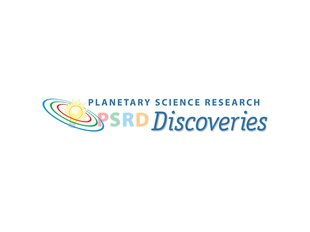
Web Interactive Planetary Scientific discipline Research Discoveries
Planetary Science Research Discoveries (PSRD) is a NASA-sponsored educational site sharing research on meteorites, asteroids, planets, moons, and other materials in our Solar System. Easily search through the extensive PSRD Archives for background reading and annotated slide sets for your online learning
Become Explore

Resource Guide NASA Science at Home
access to everything from formal lesson plans to astonishing imagery and stories about how NASA science and exploration are lifting our world. In that location will exist ongoing opportunities to chat and interact with scientists directly.
Go Explore

Video Life in the Universe Pandemic Series
This series of talks are presented by Charles Cockell, Professor of Astrobiology at the University of Edinburgh, Scotland, equally coincidental, fireside chats for those who are isolated at habitation would like to learn about interesting questions in astrobiology. These informal talks are produced and presented by Charles Cockell, and are not supported by NASA Astrobiology. This link is provided as a resource of general interest to the astrobiology customs. Any opinions expressed are the author's alone.
Go Explore
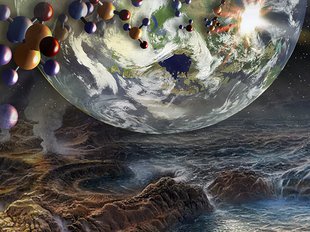
Classroom Materials Hypotheses near the Origins of Life (Khan Academy)
If in that location were other life out in that location in the universe, how similar practise you think it would it be to life on World? Would it use DNA as its genetic fabric, like you and me? Would it fifty-fifty be fabricated upwards of cells? We can only speculate about these questions, since we haven't withal found any life forms that hail from off of World. Simply we can call up in a more informed style about whether life might exist on other planets (and under what conditions) by considering how life may take arisen right here on our own planet. In this commodity, nosotros'll examine scientific ideas nearly the origin of life on Globe. The when of life's origins is well-supported past fossils and radiometric dating. But the how is much less understood.
Go Explore
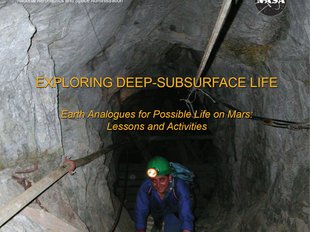
Hands-on Classroom Activities Exploring Deep-Subsurface Life
Globe Analogues for Possible Life on Mars: Lessons and Activities
Become Explore
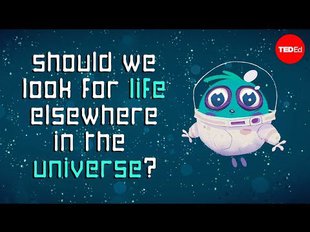
Classroom Materials Should we be looking for life elsewhere in the universe?
Equally the number of "potentially habitable" planets that astronomers find continues to rise, we seem ever closer to answering the question, "Are nosotros lonely in the universe?" But should we exist looking for life elsewhere? If we were to find life in one of these worlds, should nosotros attempt to contact whatever beings who may live there? Is that wise? Aomawa Shields navigates the murky waters of pursuing marvel in this video. A review quiz is also provided.
Become Explore
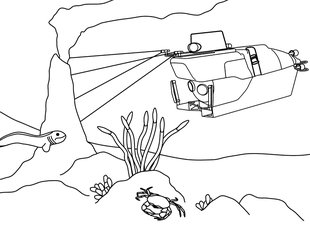
Classroom Materials Kid's Activities: Alvin Submersible 50th Ceremony
A collection of materials from the Wood Pigsty Oceanographic Institution released for the celebration of the 50th Anniversary of the Alvin submersible.
Get Explore
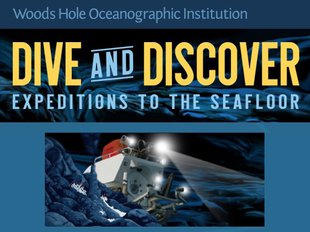
Web Interactive Swoop and Discover (Woods Hole Oceanographic Establishment)
Dive and Discover is an interactive website designed to immerse you in the excitement of discovery and exploration of the deep seafloor. There are a number of virtual expeditions of particular relevance to astrobiology, including sections on hydrothermal vents on the bounding main flooring.
Go Explore

Classroom Materials Life…Out of This World?
A new ready of Astrobiology lesson plans for K-12 classrooms from Albion College. In this drove of scientific discipline activities, seven thorough lesson plans regarding distinct topics in Astrobiology are presented. Each lesson program has direct and descriptive rationale, objectives, materials, instructions, assessments, reflections, standards, form levels, and evaluations.
Go Explore
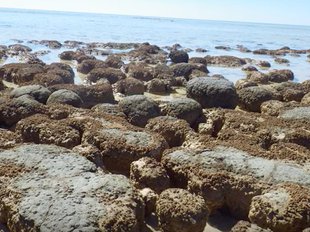
Video What are Stromatolites?
Stromatolites are i of the oldest ecosystems on Globe. These structures are made past the activities of microbes. This video provides some bones insight into living examples of these aboriginal microbial ecosystems.
Go Explore
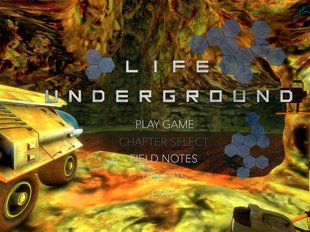
Classroom Materials Life Secret: The Game
Through the NASA Astrobiology Institute (NAI), the NASA Astrobiology Programme supported the development of an educational game chosen Life Clandestine at the Academy of Southern California's School of Cinematic Arts. Life Hush-hush is an interactive outreach experience for 7th and eighth grade classrooms. The goal is for students to visualize microscopic life at a range of terrestrial and extraterrestrial subsurface conditions. Students take the role of a young scientist investigating extreme subsurface environments for microbial life. Tested by teachers, Life Underground was carefully designed to deliver the excitement of astrobiology exploration into heart school classrooms and inspire players to explore Stalk-based careers.
Get Explore
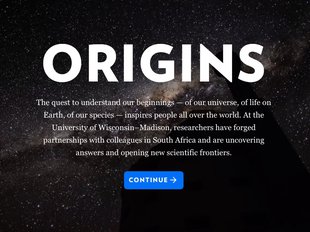
Web Interactive Origins
The quest to sympathise our beginnings — of our universe, of life on Globe, of our species — inspires people all over the world. At the University of Wisconsin–Madison, researchers have forged partnerships with colleagues in South Africa and are uncovering answers and opening new scientific frontiers.
Go Explore

Spider web Interactive NASA Ocean Worlds: Water in the Solar System and Across
The story of oceans is the story of life. Oceans define our domicile planet, covering the majority of Earth'due south surface and driving the water bike that dominates our land and temper. But more profound still, the story of our oceans envelops our abode in a far larger context that reaches deep into the universe and places u.s. in a rich family of ocean worlds that span our solar organisation and across.
Become Explore

Podcast "The Rules of Life," an NSF audio documentary
NSF-produced audio documentary envisions hereafter where scientists can predict how cells, brains, bodies and biomes volition react to changing environments.
Go Explore

Showroom Material Mission: Observe Life!
The Mission: Detect Life! exhibit at the Pacific Science Center in Seattle, WA shows how astrobiologists search for life elsewhere in the Universe, studying extreme environments to understand the potential habitability of extraterrestrial environments and examining how life might arise on planets orbiting stars different from our Sun. The exhibit features research at the Virtual Planetary Laboratory and runs March 18-September 4, 2017. Videos from the showroom tin can exist viewed from this link.
Become Explore
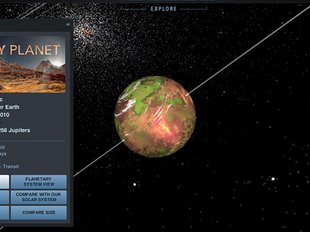
Web Interactive NASA's Eyes on Exoplanets
Go set for launch. "Eyes on Exoplanets" volition fly you to whatsoever planet yous wish—as long equally it'due south far beyond our solar system. This fully rendered 3D universe is scientifically accurate, assuasive you to zoom in for a close await at more than 1,000 exotic planets known to orbit afar stars.
Become Explore
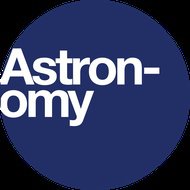
Textbook Free, Non-Turn a profit Introductory Astronomy Textbook
Astronomy is a textbook published by OpenStax, a national non-profit projection to develop high-quality intro textbooks costless to students. Senior authors are Andrew Fraknoi, David Morrison, and Sidney Wolff. The project had the help of over 75 astronomers and astronomy educators, to make sure that the text is upwards-to-appointment, administrative, and educationally audio. Ancillary materials are being developed. Authors and instructors can share syllabi, teaching materials, handouts, labs, etc. at the Open up Teaching Resources (OER) Commons website: https://world wide web.oercommons.org/groups/openstax-astronomy/1283/
Get Explore

Resources Guide 2017 Solar Eclipse Data & Resources
A resource guide to exploring eclipses in full general and the August 21, 2017 Total Eclipse.
Go Explore

Resources Guide Astronomy of Many Cultures
A listing of resources nigh cultures and astronomy by Andrew Fraknoi
Go Explore

Video Kurzgesagt - In a Nutshell: Scientific discipline Animation Videos
A serial of fun, easy to understand, science animation videos on topics such as: Are Y'all Alone? (In the Universe), the Big Bang, the Fermi Paradox, What is Life, and much more.
Go Explore

Hands-on Classroom Activities Rise Stargirls Teaching and Activeness Handbook
Rising Stargirls announces the release of their new Teaching and Activeness Handbook! By integrating creative strategies such as free writing, visual fine art, and theater exercises, this new innovative astronomy curriculum addresses each daughter as a whole by providing an avenue for individual self-expression and personal exploration that is interwoven with scientific engagement and discovery. Hands-on activities, educator resource, and a suggested structure for workshops are provided in this manual. It is meant for utilize it in classrooms and breezy learning environments anywhere in the world. The activities are created for middle-school girls, ages 10-15.
Go Explore
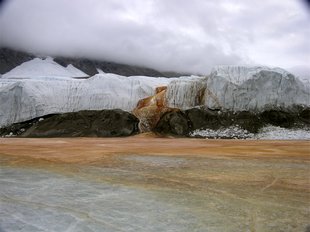
Poster Astrobiology Education Poster
With gorgeous graphics, supporting background reading, and three inquiry- and standards-based, field tested activities, this poster is a swell addition to whatsoever middle or loftier school classroom. Information technology explores the connection betwixt farthermost environments on World, and potentially habitable environments elsewhere in the Solar System.
Go Explore
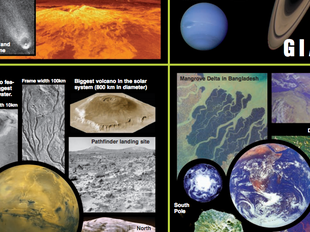
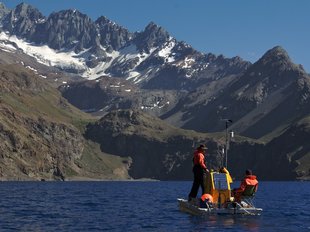
Classroom Materials Planetary Lake Lander Project Video Series
In December 2011, loftier in the primal Andes of Republic of chile, NASA scientists launched the epitome Planetary Lake Lander, a testing platform for the development of robots that are capable of making scientific decisions based on the data they collect. Dr. Nathalie Cabrol leads a team of researchers working on these smart robots, which volition expand our ability to search for life in the universe.
Become Explore

Classroom Materials The Search for the Origin of Life
The Search for the Origin of Life takes a personal look at scientists around the United States working with the NASA Astrobiology Institute (NAI) to understand the origin of life. Attempting the seemingly impossible, these researchers want to answer ane of humanity's oldest questions - how did life begin? Travel with them to some of our planet World'southward almost extreme environments - from the frozen glaciers of the Canadian Arctic, to the inhospitable thermal springs of Yellowstone National Park, and to mysterious caves in Italian republic.
Become Explore

Classroom Materials Astrobiobound! The Search for Life in the Solar Organisation
Astrobiobound gives heart and high school students an opportunity to have a cleft at planning an astrobiology-specific NASA science mission to Mars, helping them to learn how science and systems engineering play a part in achieving their goal.
Go Explore

Web Interactive Exploring Life'southward Origins: A Timeline of Life's Development
Acquire about important events in the history of life on Earth.
Become Explore
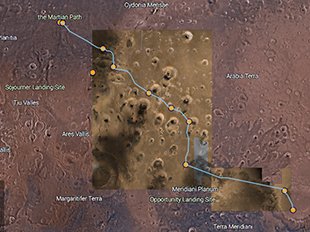
Web Interactive Solar System Treks
The Solar System Treks are online, browser-based portals that permit you lot to visualize, explore, and analyze the surfaces of other worlds using existent data returned from a growing fleet of spacecraft.
Get Explore

Web Interactive Planetary Maps Designed for Children
In the framework of the program Europlanet 2012, vi Solar System bodies are mapped past planetary scientists and graphic artists on spectacular map pages.
Go Explore
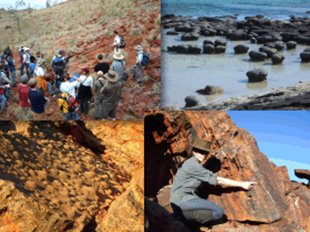
Video Looking for Life TV Documentary
NAI scientists and their international partners are featured in this documentary which has aired both on PBS and NASA-Tv. The program highlights cut edge field work looking at unique habitats and survival mechanisms of life on Earth.
Go Explore

Classroom Materials Voyages Through Time
This is an integrated scientific discipline curriculum for 9th or tenth grade based on the theme of evolution and delivered on CD-ROM. It's six modules span the breadth of astrobiology enquiry, from catholic evolution through the development of life, and beyond.
Get Explore

Classroom Materials Astrobiology, To the Best of Our Knowledge
WAMC'south radio program "To The Best Of Our Knowledge", NAI Principal Investigator Doug Whittet talks about astrobiology, and the ongoing research and teaching activities of his New York Eye for Astrobiology (NYCA), seated at RPI.
Go Explore

Classroom Materials NOVA ScienceNOW - Hunt for Alien Earths
NOVA's ScienceNOW series, hosted past Neil de Grasse Tyson, released an episode chosen Chase for Alien Earths devoted to the work of astronomers who search for planets orbiting other stars that might host life.
Go Explore
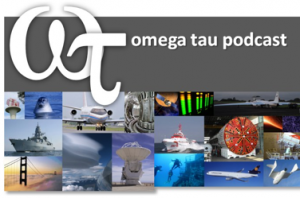
Classroom Materials Podcast Gives Introduction to Astrobiology
Tune into this podcast from Omega Tau, a wide-reaching series from Stuttgart, Germany, for an interview with NAI'due south Director Carl Pilcher. He gives a great introduction to the NAI, astrobiology, and the search for life elsewhere in the Universe.
Go Explore
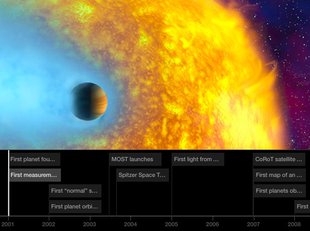
Web Interactive Planet Quest: A Historic Timeline of the Search for Other Worlds
NASA'due south Planet Quest website presents a Celebrated Timeline of the search for other worlds.
Get Explore

Classroom Materials Science Fiction Stories with Good Astronomy & Physics
CLASSROOM MATERIALScience Fiction Stories with Skillful Astronomy & Physics Prof. Andrew Fraknoi (Foothill College) has compiled a selective list of short stories and novels that utilise more or less authentic science and can be used for teaching or reinforcing astronomy or physics concepts.
Become Explore
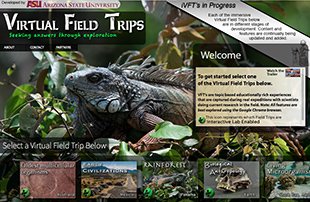
Spider web Interactive Virtual Field Trips
These are topic based, educationally rich, experiences that are captured during real expeditions with scientists doing current research in the field.
Go Explore
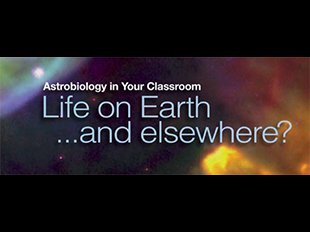
Classroom Materials Life on Earth....and Elsewhere?
This booklet contains five inquiry- and standards-based classroom activities for grades v-8 and three math extensions spanning topics from Defining Life, to Determining the Chances of Extraterrestrial Life.
Go Explore

Video Astrobiology Rap!
Tune in to this YouTube video produced by Oort Kuiper in 2008 for a six-minute journeying through astrobiology!
Go Explore

Video Is Anyone Else Out There?
Watch John Delanos TEDx talk about a survey of astrobiology research topics masterfully conveyed every bit a "story of us." The talk ranges from the manufacture of organic molecules in infinite to extrasolar planets, to hyperthermophilichemolithoautotrophs!
Become Explore
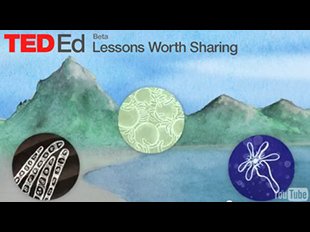
Video A Needle in Countless Haystacks
Out of billions of galaxies and billions of stars, how do we discover Earth-similar habitable worlds? What is essential to support life as nosotros know information technology? In this TED Ed video, astrobiologist Ariel Anbar provides a checklist for finding life on other planets.
Go Explore

Video NOVA: Alien Planets Revealed
Combining startling blitheness with input from expert astrophysicists and astrobiologists, Alien Planets Revealed takes viewers on a journeying forth with the Kepler telescope.
Go Explore
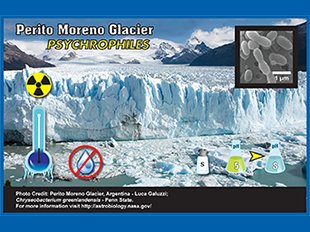
Hands-on Classroom Activities Extrem-O-Philes in the Classroom!
This hands-on/minds-on lesson can engage learners in a variety of settings, showing them how scientists use Globe-based leaner to investigate the potential for life on Mars.
Go Explore
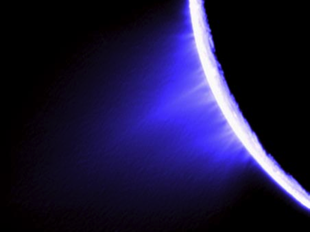
Web Interactive Explore Saturn's Moon Enceladus
NASA's Cassini mission captured dazzling imagery of Saturn's moon Enceladus, detailing plumes of ice particles and water vapor erupting from the surface and extending hundreds of kilometers into space making information technology an object of astrobiological study.
Get Explore

Poster Titan Poster
You can now display images of the intriguing earth of Titan in your classroom, part, or abode! In improver to the beautiful epitome on the front of the poster, there are lesson plans and background reading on the back.
Go Explore
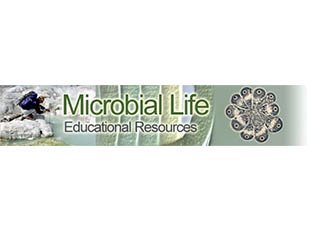
Digital Library Microbial Life Educational Resources
Microbial Life is a freely accessible digital library dedicated to the diversity, ecology, and evolution of the microbial world. Engage students with hands-on activities and other curriculum-based resources that cover astrobiological topics.

Affiche Kepler Exoplanet Travel Posters
The PlanetQuest group at JPL created these astonishing posters, beckoning us to consider places across our imagination – beyond our Solar System!
Get Explore

Exhibit Material Light Beyond the Bulb
In commemoration of the 2015 International Twelvemonth of Light, a new international exhibition, "Low-cal: Beyond the Bulb" has been launched by the aforementioned group that created "From Earth to the Universe".
Become Explore
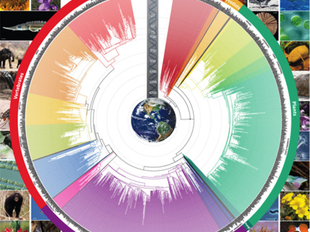
Poster Timetree of Life
TIMETREE is a public resources for cognition on the timescale and evolutionary history of life.
Go Explore
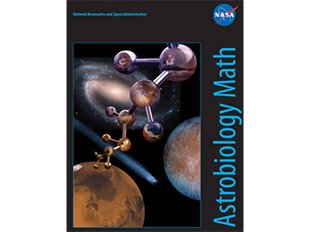
Textbook Astrobiology Math
Interested in using astrobiology to teach math? Already teaching astrobiology and desire to bring in some math problem sets? The Astrobiology Math booklet was developed past Dr. Sten Odenwald at NASA as part of the Space Math at NASA project.
Go Explore
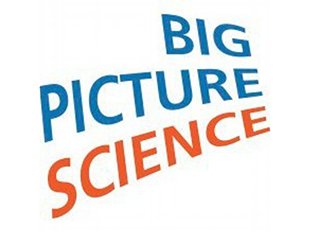
Podcast Big Motion picture Scientific discipline Radio Bear witness
The Big Motion-picture show Science radio evidence, produced past the SETI Institute, takes listeners on a journeying with modern science research through lively and intelligent storytelling. A special astrobiology collection is available.
Go Explore
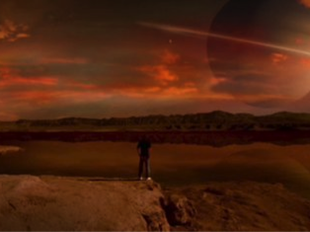
Video Astrobiology on NOVA
Nova has combined the latest telescope images with dazzling blitheness, immersing audiences in the sights and sounds of alien worlds. Astrobiologists explicate how these places are changing how we retrieve virtually the potential for life in our solar organization.
Go Explore
Source: https://astrobiology.nasa.gov/classroom-materials/
0 Response to "Dr Arts Guide to Science Exploring Systems Student Worksheet"
Postar um comentário